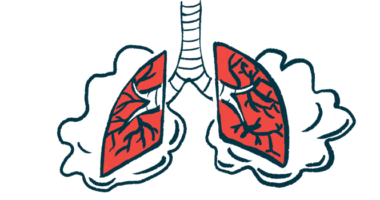Exciting Revelations from the NACFC 2018 Poster Sessions, Part 3

Last in a series. Read part one and part two.
The poster sessions at the North American Cystic Fibrosis Conference (NACFC) in Denver last month included many interesting branches of the wonderful world of CF research. In this column, I’ll finish with a series of short overviews of interesting posters from the remaining topics.
You can view a PDF of the abstracts here.
GI/Nutrition
“Is There a Link Between Key Self-care Skills and Body Mass Index?“
- This research group noted that there is strong evidence of a link between body mass index (BMI) and pulmonary function, so they were interested to see if “obtaining and preparing food may be important life skills to help maintain weight and BMI in the optimal range.”
- This is so interesting to me. I notice that when I grocery shop and cook for myself, I feel healthier and eat more healthily (obviously). But trying to find a link between the two is a smart idea.
- Researchers did, in fact, find a correlation: Patients who cooked for themselves had better BMI outcomes. Teaching these self-care skills seems like a good idea. Let’s also educate patients on how to eat properly according to our bodies, not simple guidelines.
Endocrine
“The Impact of Cystic Fibrosis-related Diabetes on Health-Related Quality of Life“
- Cystic fibrosis-related diabetes (CFRD) “is a prevalent comorbidity that negatively impacts clinical outcomes including lung function, weight, and ultimately survival,” researchers wrote.
- CF already is a huge treatment burden, so coupling it with CFRD makes life even harder for these patients. This group wanted to look at increased treatment burden and how it affected patients.
- Researchers concluded that a significant additional burden exists, and “future studies should focus on finding ways to ease the burden of blood glucose monitoring and to identify alternatives to insulin to decrease treatment burden and improve the quality of life.”
Psychosocial/Behavioral
“Examining the Correlation Between Mental Health, Physical Health and Adherence in Pediatric CF“
- I’ve written about mental health a lot. It’s a major part of our care, as it should be. This group wanted to look at the rates of anxiety and depression of patients at their clinic.
- Researchers found that patients reported symptoms at a clip significantly higher than the general population. They concluded that addressing this adds a burden to clinic flow, but this increased burden is worth it to address patients’ mental health.
- I think that acknowledging the importance of this is a step in the right direction.
Nursing issues
“Social Support Is Associated with Fewer Reported Symptoms and Decreased Treatment Burden in Adults with Cystic Fibrosis“
- I’m basically a broken record with how much I’ve talked about being grateful for having such a robust support system. I’ve intuitively felt that it has legitimately benefited my health. This study investigated the importance of social support.
- They found that “social support was … associated with elevated emotional, social, and role functioning as well as vitality and improved body image.”
- I knew I wasn’t imagining it! But this begs the question: Social support is a tough topic — for people who struggle, how do we improve this?
Education
“Reinventing Cystic Fibrosis Family Education Day with Technology“
- Due to the CF Foundation’s infection protocol, only one patient with CF is allowed to be in the room for CF Family Education Day. Families are continuously requesting more education, so they utilized small group discussions and video teleconferencing (VTC) to expand opportunities.
- Patients and families reviewed this experiment positively. Education is critical for care, so if patients are asking for more, CF care centers have to find a way to do that well. Hopefully, small group discussions and VTC is the future.
Utilization and coverage
“Integrating a Pharmacist into an Adult CF Care Team: Accessing Patient Perceptions and Needs“
- Here’s a quick story before I discuss this study: I recently switched insurance. It has been a nightmare coordinating my medications, due to all the moving parts. I am incredibly fortunate that my care center, the University of Kentucky, provides patients with a pharmacist. She has been superb in working with me to ensure I’m getting all of my medications with the least amount of headaches as possible.
- This group surveyed patients to see how they responded once a pharmacist was integrated into their care. They found that “41% of patients reported missing doses of their medications due to a pharmacy-related issue.” As I mentioned, having a pharmacist helping me has improved my quality of life. I hope all care centers implement this guideline if possible.
Before I set out to do this three-part series, I’ll admit I didn’t realize how cumbersome it was going to be. There were a lot of abstracts to go through. That was hard for me, but it means a lot of good science is happening. I hope this series has helped to inform you of the amazing research that’s happening across the country!
Please share your thoughts in the comments section.
***
Note: Cystic Fibrosis News Today is strictly a news and information website about the disease. It does not provide medical advice, diagnosis, or treatment. This content is not intended to be a substitute for professional medical advice, diagnosis, or treatment. Always seek the advice of your physician or other qualified health provider with any questions you may have regarding a medical condition. Never disregard professional medical advice or delay in seeking it because of something you have read on this website. The opinions expressed in this column are not those of Cystic Fibrosis News Today, or its parent company, Bionews Services, and are intended to spark discussion about issues pertaining to cystic fibrosis.








Leave a comment
Fill in the required fields to post. Your email address will not be published.